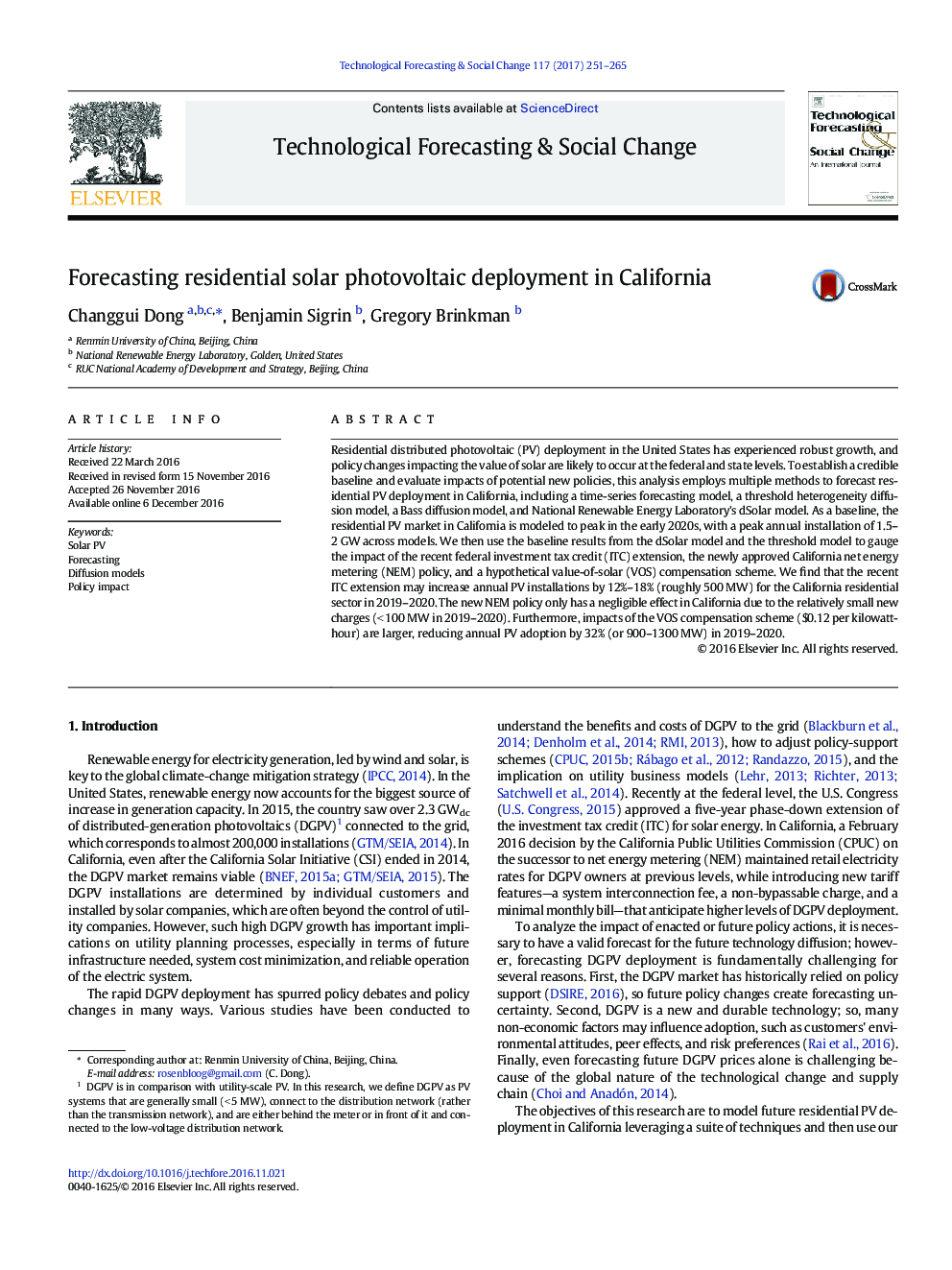| کد مقاله | کد نشریه | سال انتشار | مقاله انگلیسی | نسخه تمام متن |
|---|---|---|---|---|
| 5036910 | 1472384 | 2017 | 15 صفحه PDF | دانلود رایگان |
• We use four methods to forecast the residential PV deployment in California.
• The residential PV market in California is modeled to peak in the early 2020s.
• ITC extension could increase residential PV installed capacity by 12%–18% in 2020.
• New NEM policy only has a negligible effect due to small new charges imposed.
Residential distributed photovoltaic (PV) deployment in the United States has experienced robust growth, and policy changes impacting the value of solar are likely to occur at the federal and state levels. To establish a credible baseline and evaluate impacts of potential new policies, this analysis employs multiple methods to forecast residential PV deployment in California, including a time-series forecasting model, a threshold heterogeneity diffusion model, a Bass diffusion model, and National Renewable Energy Laboratory's dSolar model. As a baseline, the residential PV market in California is modeled to peak in the early 2020s, with a peak annual installation of 1.5–2 GW across models. We then use the baseline results from the dSolar model and the threshold model to gauge the impact of the recent federal investment tax credit (ITC) extension, the newly approved California net energy metering (NEM) policy, and a hypothetical value-of-solar (VOS) compensation scheme. We find that the recent ITC extension may increase annual PV installations by 12%–18% (roughly 500 MW) for the California residential sector in 2019–2020. The new NEM policy only has a negligible effect in California due to the relatively small new charges (< 100 MW in 2019–2020). Furthermore, impacts of the VOS compensation scheme ($0.12 per kilowatt-hour) are larger, reducing annual PV adoption by 32% (or 900–1300 MW) in 2019–2020.
Journal: Technological Forecasting and Social Change - Volume 117, April 2017, Pages 251–265
